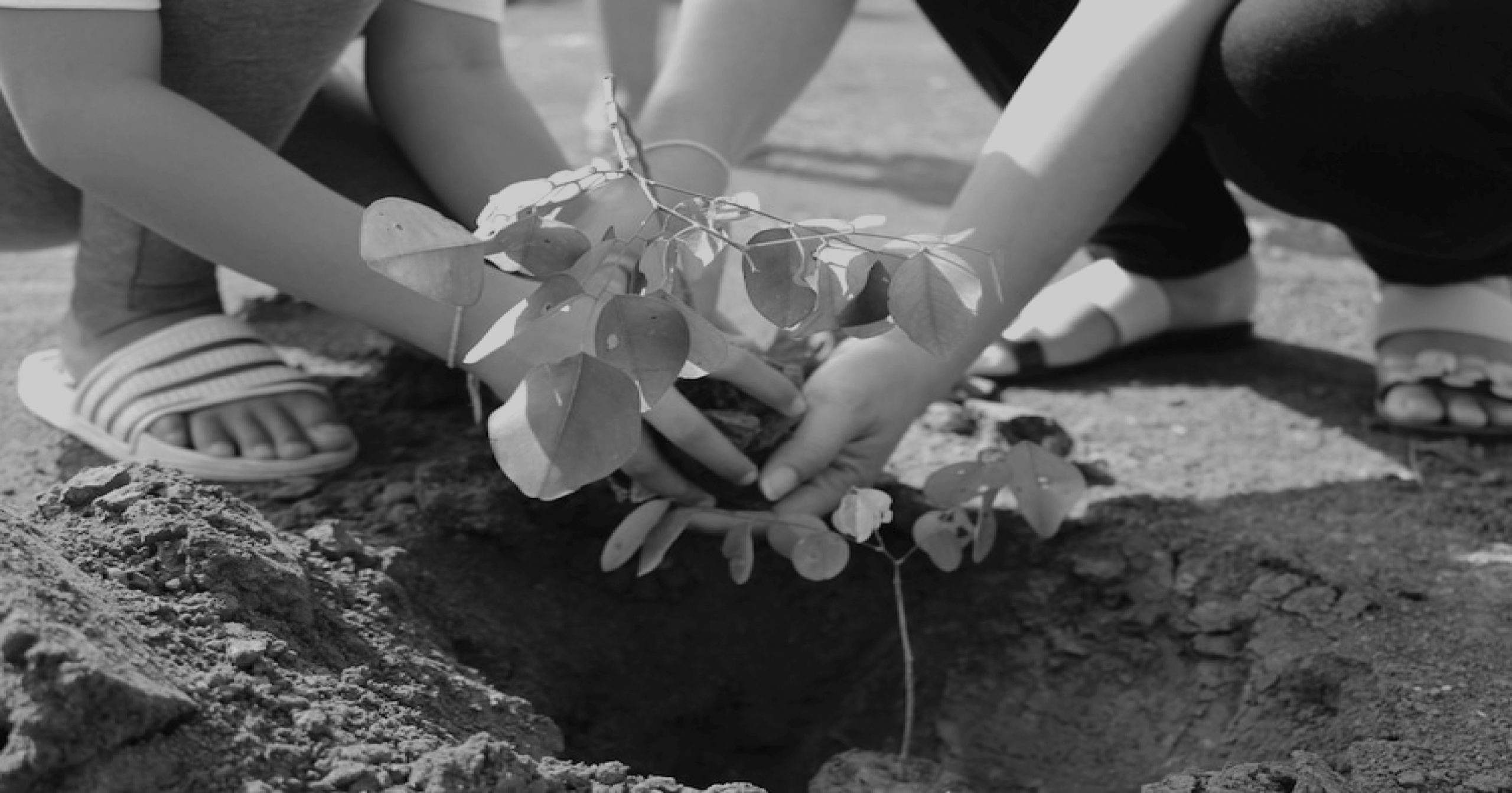
Greenhouse gas emission has continually increased over the past decades, which means that significant action is needed to reduce emissions. There have been many mitigation policies and efforts put forward to bring about deeper and faster cuts of greenhouse gases emission. However, many agree that trees suck earth warming gases out of the atmosphere far more efficiently than any other alternative.
Ethiopia, as one of the most vulnerable countries to the impacts of climate change, has looked to build a climate-resilient green economy. Realizing that, the conventional way towards growth meant that a sharp increase in greenhouse gas emission and unsustainable use of natural resources, Ethiopia took the opportunity to design a strategy to build a green economy.
As part of the effort, it has been very outspoken in the global arena about climate change and its effects, even going as far as representing Africa’s voice on the issue. Ethiopia took these initiatives not to get the appreciation of the world, or get a pat in the back, but because the country is aware that Africa is victim of climate change without contributing to it, and has no time to sit by idly and do nothing. It does not have the luxury.
Since coming to office, Prime Minister Abiy Ahmed has shown his commitment to a sustainable green initiative, whereby he has set a vision to plant 20 billion seedlings in four years, an unprecedented ambition. As part of his green legacy initiative, the Prime Minister has already headed a nationwide effort where over 350 million seedlings were planted in 12 hours last year, which set a new world record that was held by India until that time.
Since then, the Premier has announced to consolidate the Green Legacy initiative, with the plan of this year to plant 5 billion trees.
Ecosystem and Economic Value
This is part of the government’s effort to endorse afforestation as a major tool to address climate change, whereas the forest sector is also one of the four pillars under the CRGE strategy to promote green growth development.
Ethiopia’s decision to endorse tree plantation of this magnitude is very significant given the country’s geographical topography, and decreasing forest coverage. Various data claim that Ethiopia’s forest, which used to be about 30 percent of the landmass many years ago, has dwindled alarmingly. Given, for the most part, the country’s rugged mountainous topography, trees play an even more important role in conserving soil and water.
Forests have also economic value, in addition to an ecosystem service, in Ethiopia’s case, which makes the initiative to plant trees even more significant. It has a precious socioeconomic role to play.
Forest provides wide-ranging economic benefits, and in Ethiopia’s case, beyond serving as wood fuel, forest products provide quantifiable economic benefits, including livestock fodder, coffee, and honey. It has a crucial role in improving land management and productivity, which contributes to household income and reducing forest pressure.
Thus, for Ethiopia, planting trees and protecting and reestablishing forests through tree plantation is an important and crucial effort not only to support the country’s ecosystem and socioeconomic services, but also to support the country’s aim of achieving a climate-resilient green economy.
Blue and Green
Obviously, the green initiative also has its dimensions on the waters of the country. They not only protect water resources by controlling the discharge of water to streams and rivers, but they have also had a role to play in elongating the durability and lifespan of our hydro-power generating dams. Soil erosion and sedimentation play a vital role in elongating the lifespan of hydropower dams.
Reforestation and environmental protection work are then important to mitigate the serious challenges soil erosion and sedimentation poses on Ethiopia’s hydropower dams, which have implications on the country’s aim of electricity generation and power supply.
Then, there is the Grand Ethiopian Renaissance Dam (GERD), an ambitious dam that is being built on the Nile river since 2011 – a dam Ethiopia is expecting would engine its fight against poverty. Given, its pivotal importance and grandeur, the dam is an interest to every Ethiopians, making sure its lifespan lasts for many generations to come is equally an important task. And this is where environmental work is important, and where Ethiopia’s tree plantation initiative and environmental protection work, in general, can play a role.
Talking to the members of the parliament on Monday, Prime Minister Abiy Ahmed highlighted the importance of planting trees and doing environmental works have on the dam’s lifespan. He said without planting trees, the dam will dry up as without rainfall there will be no river and dam. The main source of the dam is rainfall, and that is maintained by doing environmental protection work, he noted. He also added that neighboring countries should do their bid in supporting Ethiopia in this matter, as it has regional significance as well.
The Hyacinth Situation
As it is known, Lake Tana is facing a growing and serious problem in the shape of an alien water hyacinth invasive weed, which was also a point of deliberation at the parliament’s Monday session. The Premier also took the opportunity to lament on the importance of the tree plantation initiative, and environmental protection work, in general, in the fight against this invasive water weed.
Mentioning two ways – one short-term and temporary, and one long term and permanent – to fight the water weed infesting Lake Tana, Abiy said that the fundamental and lasting solution is to undertake environmental protection works, whether it is specifically for Lake Tana or any other lakes in the country.
Explaining how the water hyacinth problem in Lake Tana unraveled – which is due to fertilizers that are used in the farmlands uphill the mountain, where the inflowing rivers that feed the lake the water source of the river start, being washed up into the lake and serving as food for the weed as the land there is degraded and there is no controlling the soil erosion and flooding – Abiy argued that environmental protection works are the lasting solution.
He underlined that while removing the weed, either manually or using machines, could reduce coverage and slow its spread, but environmental protection work is the way to go. By doing environmental protection works, like the 5 billion tree plantation initiative, in the lake basin area, it is possible to fight water hyacinth in Lake Tana and the other water bodies of Ethiopia.
All in all, Ethiopia’s initiative to plant 20 billion trees, or its general green economy strategy, is not there to set a world record or get international recognition. But rather it is a compulsory aim to fight the impacts of climate change, which poses a clear and present challenge to the country. And it is not and should not be a government only initiative, as various stakeholders and actors, and most importantly, the society at large should get involved. So, everybody has to contribute part by planting trees in the coming days whilst protecting him/herself from COVID-19.
The Ethiopian herald June 10,2020
BY STAFF REPORTER




